Do you want to improve the landscape design of your yard and property? Here are some tips for coming up with a design plan and getting started.
I’ll be honest—I’m not much of a planner, and this lack of forethought is reflected in my gardening style. My flower beds are in a constant state of change depending on what new plants I acquire each season. Many are planted and moved several times before they land in a suitable spot or die. To avoid making the same mistakes that I do, here’s some landscaping advice that I’ve learned from experts over the years.
Start With a Plan
If you were to hire a professional landscape designer, one of the first things he/she would do is draw up a plot survey of your property, including your backyard and front yard. This is something you can easily do yourself.
- Draw a bird’s-eye view of your property, noting the placement of all the man-made features (called hardscape) such as buildings, fences, driveways, stonewalls, etc. Boulders, trees, and large shrubs combine with your hardscape to form the “bones” of your landscape.
- Using graph paper helps, but you don’t have to agonize over exact measurements, a sketch that is roughly in proportion will be fine.
- Make sure to include the location of your well, septic system, or any buried utility lines. Orient your lot on the compass and note where your sunny and shady spots are.
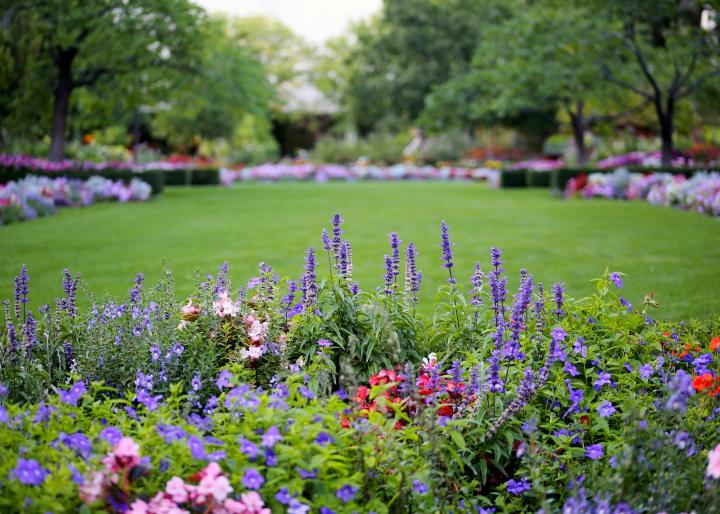
Make a Wish List
Once you know what you’ve already got, you can move on to making a list of what you’d like to have. How do you want your garden to look? Start with a few general goals. For example:
- Do you want privacy for a patio area?
- Do you want to screen an ugly view?
- Is your top priority curb appeal/resale-value or a more private (patio) display?
If you already have flower beds, note the successful plants and fill in the blank spots with the colors, heights, foliage, and bloom time you will need to get the desired look. This will help guide you when you are plant shopping. If you know that your garden lacks color after July 4th, you can limit your choices to later blossoming plants instead of buying more spring bloomers.
Be sure to make the most of what you’ve got already. Don’t try to change a dry, rocky spot into a vegetable garden. Instead, use it for a rock garden planted with sedums and hen and chicks, which can thrive in the tough conditions.
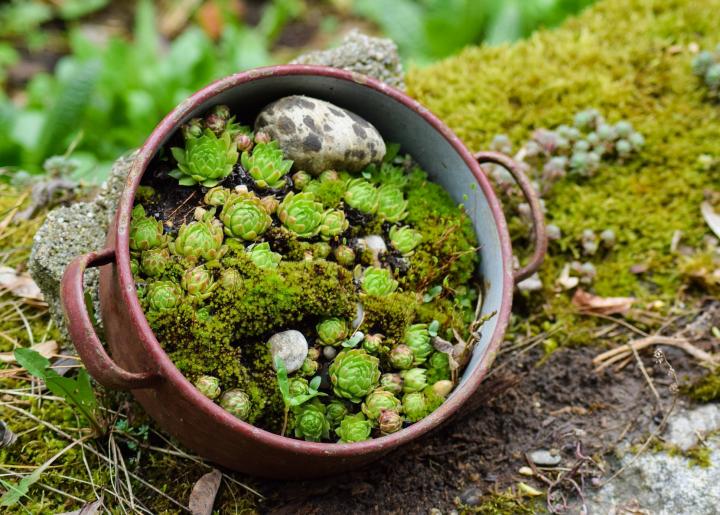
Use containers to accent difficult areas, too. They’re a great way to express your design skills on a small scale and can be changed seasonally, if so desired.
Look around your neighborhood. Plants come in all colors, shapes, and sizes. What gardens do you like? Which plant colors, shapes, textures, and sizes speak to you?
Choose Your Style
Your garden should complement your home’s architectural style. Gardening is just like decorating the inside of your house, but instead of fabrics, paint, and furniture, you will be using color, texture, shape, size, and placement of plants to create a mood.
- Formal: Straight lines; symmetry; and elegant focal points like statues and fountains, manicured lawns, and pruned hedges define this style. Color is secondary to structure and the mood is refined and serene.
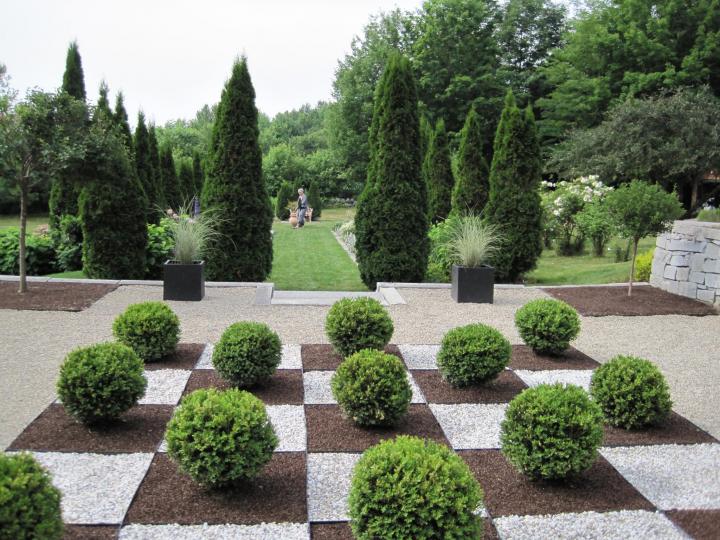
- Informal: This style is a balance between the formal and natural styles. It involves lots of curves and colors, lush growth, asymmetry, and natural-shaped trees and shrubs. The mood is comfortable and relaxing.
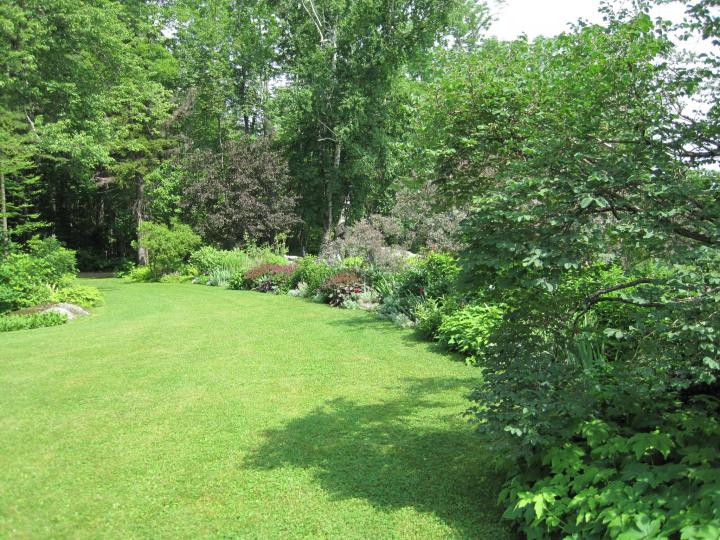
- Natural: This style imitates nature, is low-maintenance, and should blend in with the surroundings, which could be anything from a wildflower meadow to a bog. The mood can reflect untamed chaos or just energetic, natural abundance.
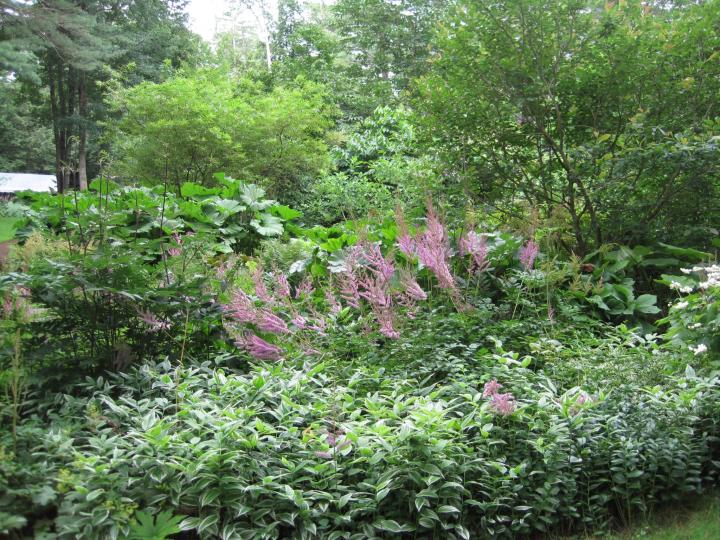
Assessing Your Needs
If you have young children or grandchildren, you’ll need areas where they can play. Same for pets. Look to incorporate “bulletproof” plants that can take some abuse, like low-growing sedum or ground phlox, which can both take some trampling.
- Think about your entryway. Do you want a welcoming front garden that directs visitors to your door? Use straight lines and hardscaped paths to lead visitors where you want them to go.
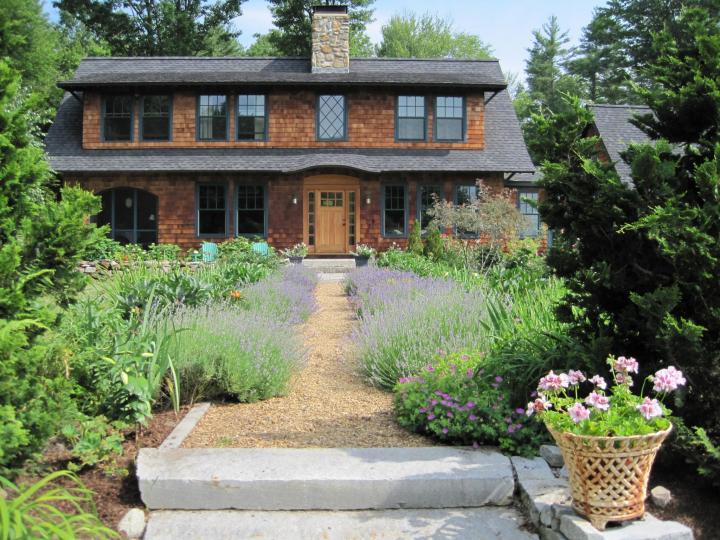
- Don’t be discouraged by a small garden space. There are tricks you can use to make small plots seem larger, such as lining up paths, gates, and trees to create sight lines that allow the view to flow from one area into another. Also consider that having many small groupings of different colored flowers can make a space seem cluttered, whereas grouping similar colors and textures together can really open up a small space.
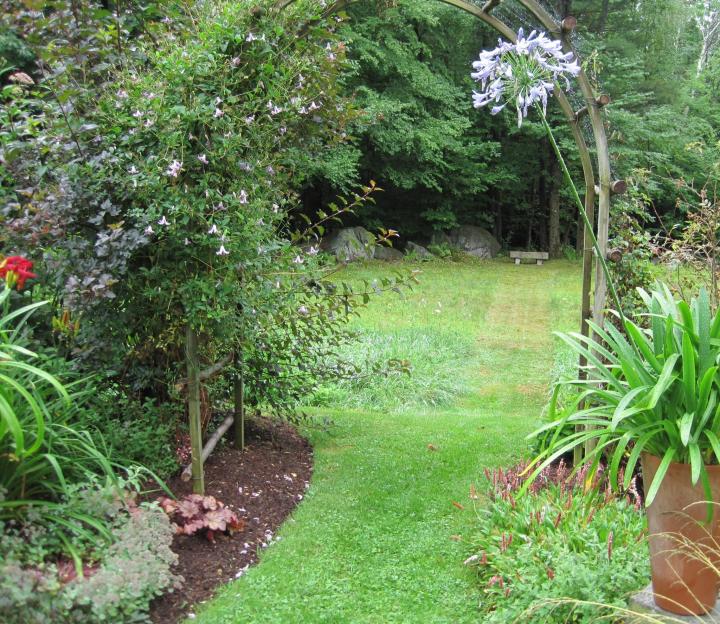
- Create your own getaway spot. Use larger shrubs and ornamental grasses to cordon off an area for rest and relaxation, like this secluded bench. Here, you can watch over the garden and enjoy the fruits of your labor.
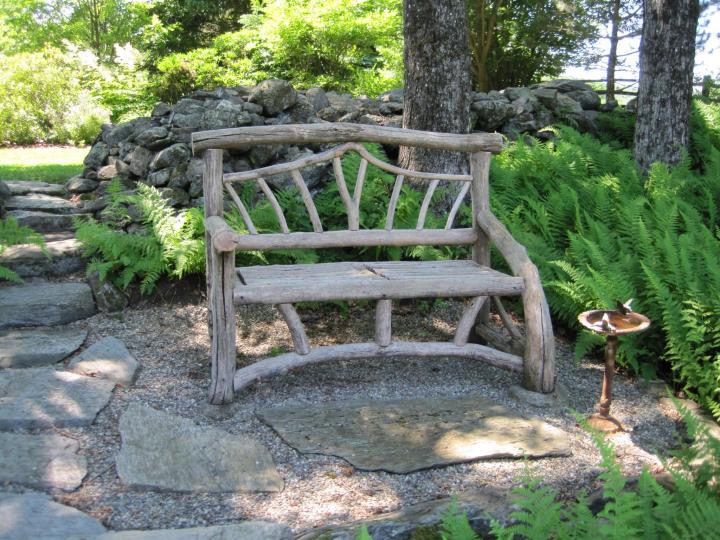
Hardscape, Then Plant
It’s tempting to start your design with the plants, but it’s best to tend to your hardscape first. Once that’s in place, you’re ready for the fun part: planting!
- Start by planting trees or shrubs. Begin from the house and work outward. Remember to plan for the mature size of the trees and shrubs to avoid having to move them later, when they outgrow their space! Deciduous shrubs planted in front of evergreens will change the look seasonally. And don’t forget to pick some shrubs for winter interest, too, such as witch hazel or forsythia.
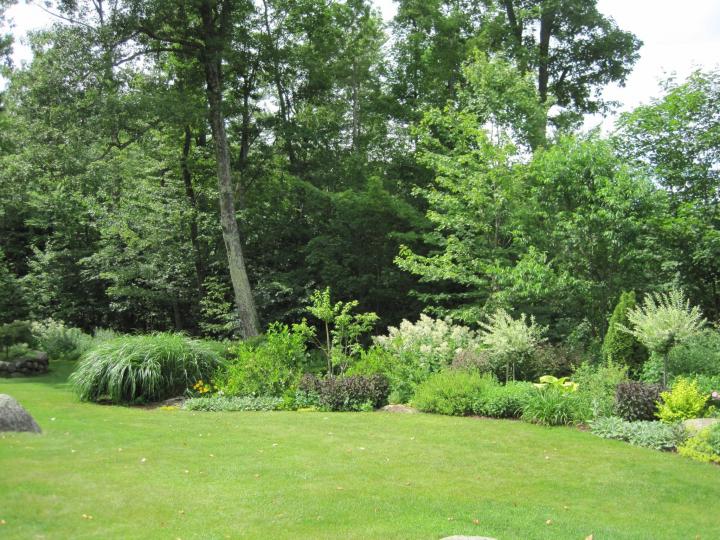
- Lay out potential flowerbeds with a hose or rope. A few gentle sweeps look more natural than many sharp curves. Borders are usually planted against a wall, fence, or hedge and are viewed from one side only.

- Beds present more of a challenge, since they can be seen from all sides. Wide beds and borders need a hard path or stepping stones to allow you to tend the plants without compacting the soil or trampling anything.
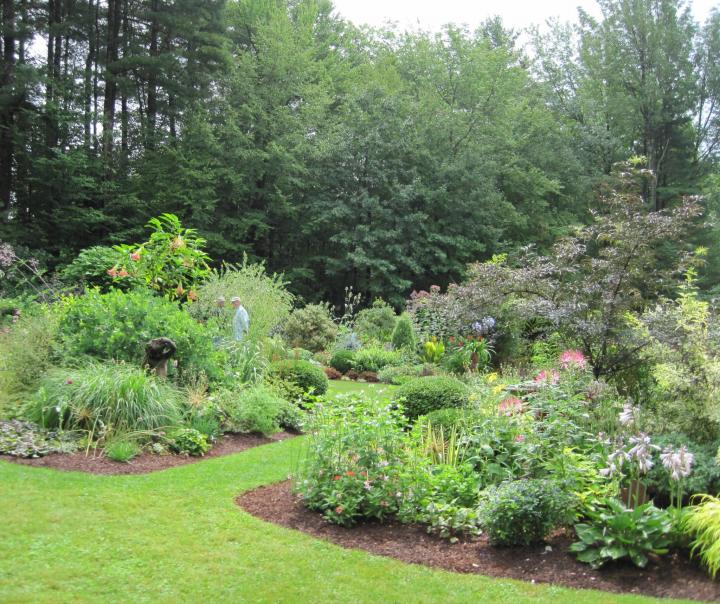
- Define the edges where your flower garden meets the lawn. A physical barrier made from metal, vinyl, granite, or brick will help to keep grass from encroaching into the beds. Plants in the foreground can be left to spill over this edging, softening the look.
- Layer plants according to height. Repeat drifts of similar plants throughout the garden to give it rhythm. Large blocks of one plant will make the most impact when viewed from a distance rather than the polka dot look of many different plants in one area. To combine plants effectively, take into consideration their size, shape, leaf color and texture, flower color, and visual weight. Loose and open or heavy and dense?
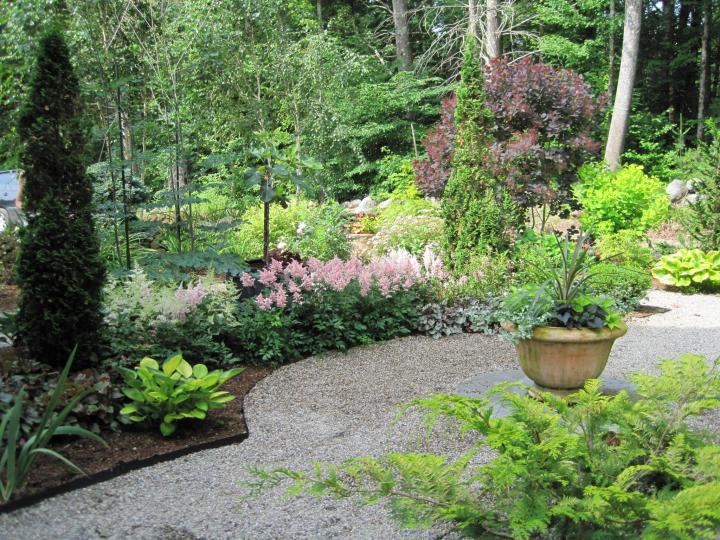
- Bold-leafed plants like hostas combine well with finely textured ones like astilbe. Blue-green, chartreuse, bronze, burgundy, and silver-leafed plants liven up the garden even when they are not in bloom.
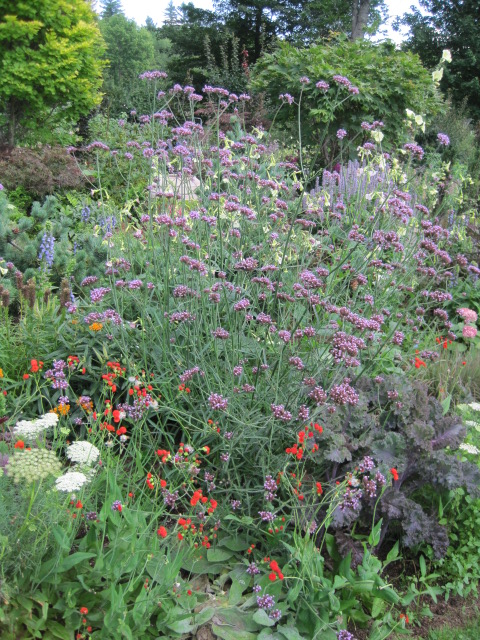
- Remember that hot colors appear to advance while cool colors recede into the background. White can separate clashing colors and will brighten up a shady spot.
In Conclusion
Armed with a realistic and well-thought-out landscaping plan, you can spread out the work and expense over several years. Take it one step at a time to keep your project from becoming overwhelming. Remember, this is supposed to be fun! You are creating a space for you to enjoy. Small steady improvements over the years can transform your yard into the paradise you envision.
Do you have any landscaping ideas or advice? Tell us in the comments below!























